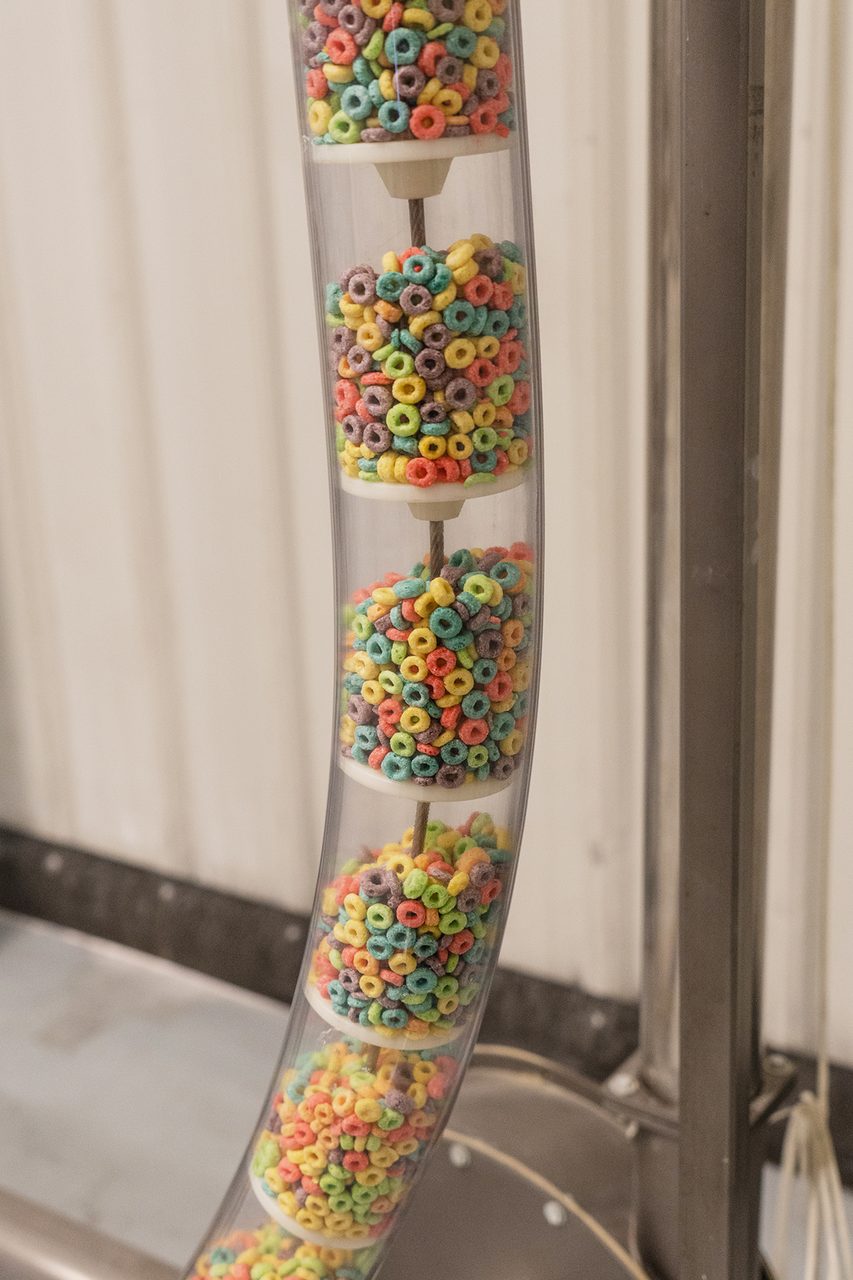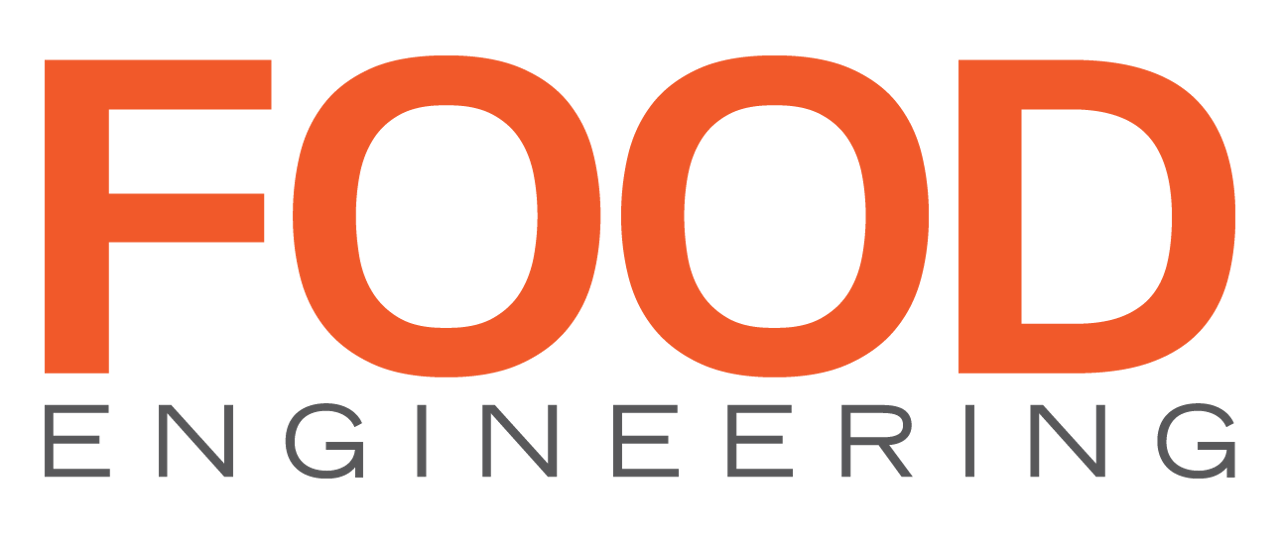FEBRUARY 2022
automated material transfer effectively
How to use
Tips to help food processors assess their material transfer system and determine if automation is right for them
In December, we posted on our website a guest column written by Andy Forrester, vice president of sales, Americas, at Spiroflow. In it, he talks about bulk bag filling automation opportunities for dry bulk powders and ingredients.
Even though the use of bulk bags for dry bulk ingredient handling has increased, many manufacturers have not invested in automated bulk bag handling systems. Many food processors use manual processes performed by an operator for bag rigging, filling and removal. Forrester says, “The introduction of automation at key points in the bulk bag handling process can amplify the already attractive benefits of bulk bags with a better ROI in the long run and often with a quick payback due to cost savings on labor.”
We wanted to learn more about automating material transfer and what food processors need to know to use it most effectively. So, we sat down with Forrester to find out how food processors can assess their material transfer system and determine if automation is right for them.
Sharon Spielman, senior editor
Tubular drag conveyors allow coffee manufacturers to gently move delicate whole roast coffee beans to their packaging lines while minimizing the breakage of the beans. Photos courtesy of Spiroflow
Andy Forrester
vice president of sales, Americas, at Spiroflow

Sharon Spielman, Food Engineering (SS): When it comes to material transfer in the food processing line, what are the most important factors to consider when contemplating automation?
Andy Forrester (AF): There are a wide range of factors that must be taken into consideration and the priorities will vary depending on each client’s specific needs and goals. Some customers might simply be trying to increase production capacity, so conveying or filling rates may be the most critical factor to them.
Others could be looking to reduce manual labor, improve process safety or sanitation, reduce dust emissions or improve accuracy. Several material-specific characteristics will also need to be considered to determine an optimal solution, and these could include the bulk density of materials, particle size, flow characteristics, cohesiveness and friability.
SS: Can you offer an example?
AF: Many customers still receive some ingredients in small 50-pound bags, which are manually handled and introduced to their process. An alternative with multiple benefits could be switching to a bulk bag or FIBC [Flexible Intermediate Bulk Container] solution where ingredients can be dispensed, weighed and automatically conveyed to their process. Making such a change can help reduce labor and waste for product and packaging, improving speed and accuracy, and minimizing the risk of contaminants being introduced to the product.
SS: What stats should a food processor expect when automating their material transfer on their line?
AF: Our goals will vary from project to project but might include throughput rates, weighing accuracy, minimizing dust or waste, system cleanability or reliability.

An automatic pallet dispenser removes the need for manual unstacking of pallets, saving time and easing manual labor.
SS: What emerging trends do you see in the automated material transfer arena?
AF: Two of the main areas driving changes in bulk material transfer systems are health and safety and FDA code-related. From a health and safety perspective, avoiding operator exposure to any hazardous dusts or chemicals has become a very hot topic with OSHA, and breeches can result in significant fines and consequences.
In addition, many airborne dusts also pose significant explosion risks, and all material transfer systems are now required to be assessed with regard to their compliance with NFPA codes and standards. From an FDA compliance perspective, the Food Safety and Modernization Act (FSMA) and Good Manufacturing Practices (GMP) documents list many areas that impact conveyor design and are requiring upgrades or replacements in many food production processes.
SS: What are the biggest challenges when it comes to automating material transfer, and how are these overcome? Can you offer an example?
AF: The flow characteristics of bulk solids is far less predictable than liquids or gases so experience and testing capabilities can be keys to a successful project.
A common issue that has to be overcome in a number of food processing applications is to minimize damage to a fragile finished product while still achieving the required material transfer rates.
A good example of where we have done this would be through the use of tubular drag conveyors in the coffee industry. Roast whole coffee beans are fragile and many methods of conveying, such as pneumatic or screw conveyors, would result in significant degradation of the end product. To avoid this, we have provided a number of Cableflow tubular drag conveyors to key coffee manufacturers, which allows them to gently move the whole roast coffee beans to their packaging lines while minimizing the breakage of the beans.
SS: How can food processors utilize automated material transfer most effectively?
AF: Work with an equipment manufacturer that understands processes and can offer designs customized to meet their needs rather than someone who sells off-the-shelf equipment. It is also important to look at the pros and cons of a variety of different potential solutions, so working with a company that offers a wide range of technologies and has testing capabilities can be a key factor for the success of a project.
SS: is there anything else processors need to know about automated material transfer and how they can use it effectively?
AF: Automating part or all of your dry material handling processes can have a huge positive impact on a number of aspects of your food production operation, including efficiency, quality, cost reduction, sanitation and safety, to name but a few.
However, a poorly designed and executed project can incur significant costs and leave owners and operators frustrated, wondering if they will ever see these benefits. It is critical to have clear and well-defined goals and expectations, and to work with an experienced team of experts who understand not only the equipment they will be supplying, but how it will integrate into the overall plant operation if the benefits are to be maximized and realized quickly. FE

Airborne dusts pose significant explosion risks, and material transfer systems are now required to be assessed for their compliance with NFPA codes and standards.
FEBRuary 2022

